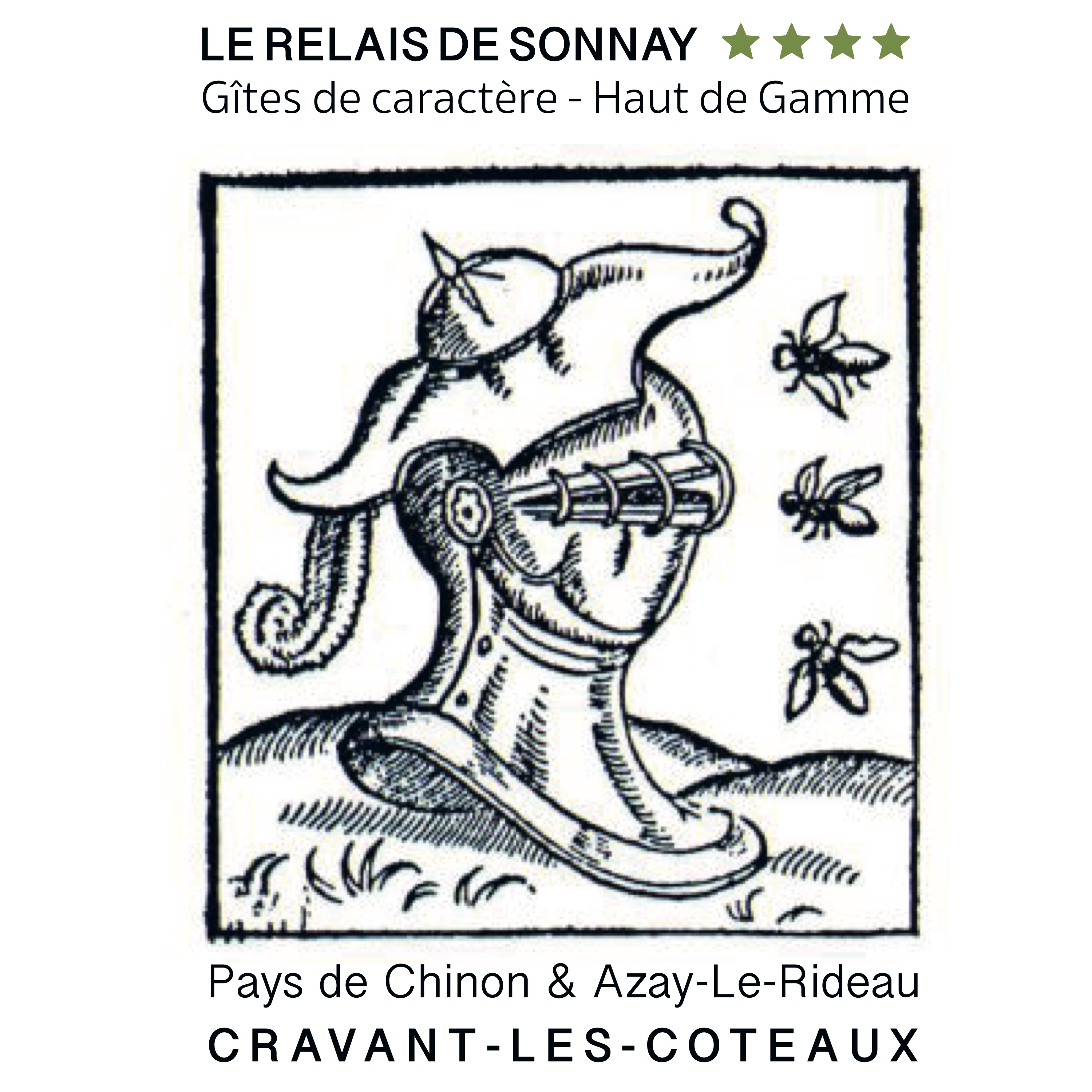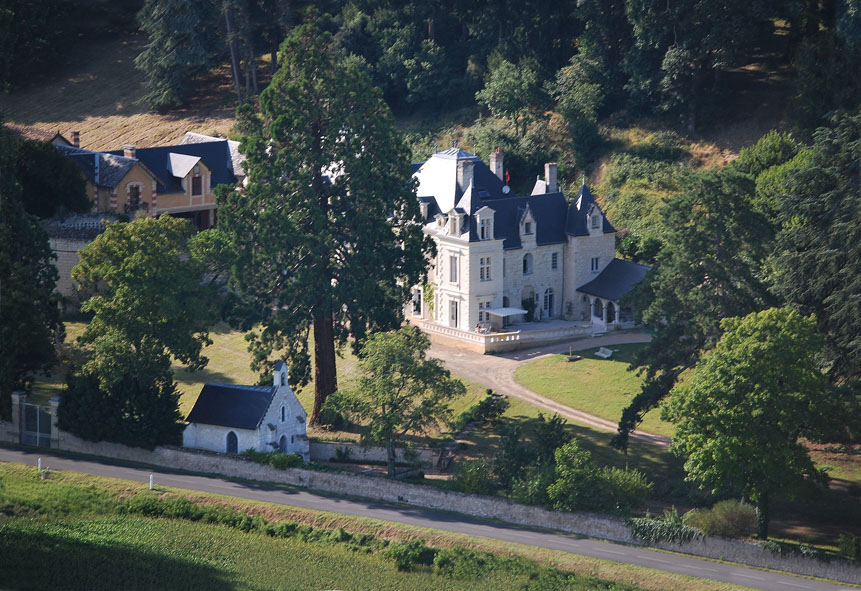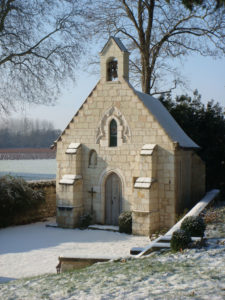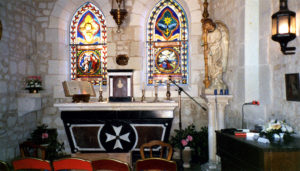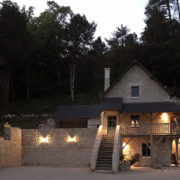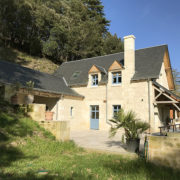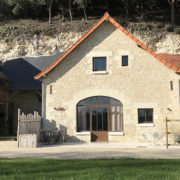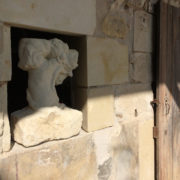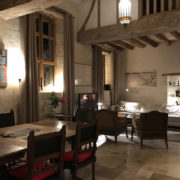Habité depuis la période néolithique, « Sonnay » serait pour certains étymologistes, un dérivé du gaulois « Sunna », « Domaine ensoleillé » dont parle Grégoire de Tours dans ses écrits du VIème siècle….
Depuis toujours apprécié pour son exposition au Sud, à mi-hauteur de coteau, avec une vue semi plongeante sur la vallée de la Vienne, Sonnay incarnerait, pour d’autres historiens, la fonction du guetteur chargé de « sonner » l’alerte en cas d’attaque des Vikings ; version d’autant plus crédible qu’une motte carrée de 30 mètres de côté semble avoir été implantée là, à l’initiative de Foulques Nerra, sur le site d’un ancien oppidum gaulois.
Ainsi habité dès le haut Moyen-âge par les Sonay pro-Plantagenêts, Wilhelm de Sonay, 17e Grand-Maître de l’Ordre du Temple, plus connu sous le nom de Guillaume de Sonnac, en serait originaire.
Sonnay devint alors un fief titulaire des droits de Haute Justice, et le château actuel fut érigé au cœur du XVe siècle, par Jean de Xaincoins, gouverneur général des finances de Charles VII et de la reine Marie d’Anjou. De cette époque datent la fuye aux 2.250 trous de boulins (qui en font l’une des plus importantes de Touraine) et la chapelle placée sous le vocable de sainte Catherine (d’Alexandrie), récemment restaurée et honorée à ce titre par le prix VMF 2002 de la meilleure restauration cultuelle.
Au XIXe siècle, le château et le parc sont agrandis et là où existaient auparavant divers clos de vigne appartenant à différents propriétaires, les parcelles sont réunies pour se fondre en un parc arboré, sous des variétés de cèdres, séquoias et pins laricio, dont les frondaisons sont visibles de loin.
Inhabited since the Neolithic Period, the name “Sonnay” would be for certain etymologists derived from the Gallic “Sunna”, “the Sunny Place” or “the Estate in the Sun”, mentioned by the writings of Gregory of Tours in the sixth century.
Always appreciated for its southern exposure, midway up a hillside with a sweeping view of the Vienne Valley, “Sonnay” would signify for certain historians a lookout to “sonner” or “sound” the alarm in the event of a Viking attack; another credible theory is of a 98 foot wide motte and bailey established by Fulk Nerra, the “Black Falcon”, in the early eleventh century on the former site of a Gallic settlement.
It was then the property during the middle ages of the pro English – Plantagenet family of Sonay; Wilhelm de Sonay, the seventeenth Grand Master of the Knights Templar, better known as Guillaume de Sonnac, came it seems, from here.
Sonnay then became a fiefdom with the right to exercise high justice on its lands; the present château was built during the fifteenth century by Jean de Xaincoins, governor-general of finance under King Charles VII and the Queen Marie of Anjou. The separate open pigeon house with 2,250 putlog holes is from this time and is one of the most important of the Touraine region. The private chapel, placed under the patronage of Saint Catherine of Alexandria was recently restored, for which it earned the VMF Prix in 2002 for the best restoration of a religious edifice.
In the nineteenth century, the château and the park were enlarged, and the different vineyards and lands belonging to other owners were reunited again to make the tree shaded park with cedars, sequoias and Corsican Pines whose tops can be seen from afar.
Замок « Соннэ »
Некоторые исследователи-языковеды определяют название места « Соннэ », где прослеживаются следы наших предков уже с времен неолита, как искажение галльского « Сунна », т.е. « Солнечное хозяйство », о котором упоминает в своей летописи 6-го века Григорий Турский …
Постоянно ценимый за расположение на склоне холмов, лицом к югу, с прямым видом на долину реки Виенна, « Соннэ » для других историков связано с воинским наблюдательным постом в случае нападения Викингов, которому тогда положено бить тревогу ( глагол « соннэ » переводиться « звонить »). Это толкование достаточно правдоподобное, по сколько курган с краями по 30 метров очевидно был оборудован здесь по повелению Фулька Черного, на месте бывшего галльского укрепленного поселения.
Обитаемый с самого раннего средневековья родом « Соннэ », сторонниками Плантагенетов, Вильгельм де Соннэ, 17-й великий магистр ордена Тамплиеров, более известный как Гийом де Соннак, был по всей вероятности одним из его отпрысков.
Соннэ стал в свое время феодальным уделом с правами на полное правосудие (вплоть до смертной казни) и нынешний замок был сооружен в средине 15-го века рыцарем Жан де Ксенкуэн, главным казначеем короля Карла 7-го и королевы Марии Анжуйской. С этих времен стоит голубятня с 2250 голубиными гнездами (одна из самых крупных в провинции Турэн) и часовня в честь святой великомученицы Екатерины (Александрийской), которая была недавно отреставрирована и удостоена призом обществом « Старинные дома Франции » в 2002-м году, как наилучшая культовая реставрация.
В 19-м веке, усадьба и парк были увеличены, за счет приобретения у ряда мелких владельцев участков с виноградниками для создания парка с большим количеством благородных деревьев – кедры, секвои и сосны « ларичио », вершины которых видны издалека.
La chapelle sainte Catherine (d’Alexandrie)
